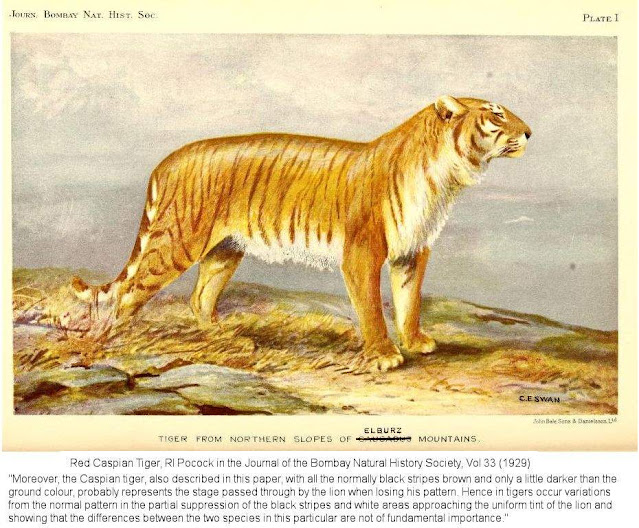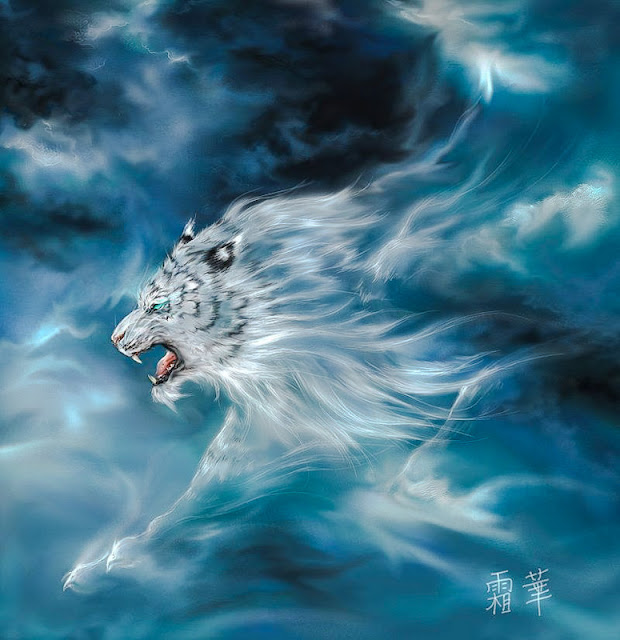Rare golden tigers are a result of inbreeding
As a consequence of the spontaneous genetic mutation of a recessive gene in a normal tiger in the wild, the offspring (or some of the offspring) were described as golden. In crude terms these were mutant tigers, and the recessive gene became visible in the appearance of the tiger i.e., the phenotype because the tigers were inbred which allows recessive genes to become visible in how they affect the appearance of the animal.
 |
| Golden tiger. Photo: Pixabay. |
So, I think is fair to say that the first golden tigers were created because of inbreeding which indicates a confined population of tigers perhaps living in a fragmented distribution which meant that tigers had to mate with each other in a relatively small group resulting in inbreeding.
There were two groups of golden tigers: those in the wild and those in captivity. My research, thanks to Sarah Hartwell, indicates that the last recorded wild golden tigers were shot as a pair in 1932 in Mysore Pradesh, India. Hartwell thinks that this may be a misleading account of two Assam tigers described by biologist brothers.
The first captive-born golden tiger occurred in 1987. This refers to 2 golden tabby tigers; a three-month-old male and a three-week-old female which apparently were valued at $600,000 at the time. They were the only two in the world at that time. It took Josip Marcan two years, he said, of breeding to get the golden tabby colour. It looks like he was engaging in what would be called selective breeding in the cat fancy.
Hartwell says that the golden colour is because of a recessive mutation which increases the width of the pale bands on each individual hair strand. This causes the normally rich orange background colour that we know in tigers to become pale gold and the stripes are red brown to dark brown. The pale areas become white.
 |
| Golden tiger or red tiger. Image in public domain and published on messybeast.com. |
RELATED: White tigers: the result of generations of unhealthy breeding practices.
Hartwell also says that she believes that the genetic mutation affects the structure of the fur. It makes it softer than standard tiger fur. There are no black markings as is normal which makes their white markings unusually prominent, she says. This particularly applies to the face.
Also, golden tigers are larger than the normal orange Bengal tigers. It appears that the mutation carries with it health problems because "they tend to have problems with their pelvic girdles and lumbar vertebrae".
Although I have described these as Bengal tigers carrying a genetic mutation, it is probable that they are Siberian/Bengal hybrids. I'm referring to those in captivity because the tigers in captivity are what I would call 'generic' meaning not purebred, neither purebred Bengal tigers nor purebred Siberian tigers. This is because the people who own these private zoos don't keep a studbook. They don't keep an eye on lineage and aren't concerned with it.
And as is the case with white tigers, golden tigers must continue to be inbred in order to allow the recessive gene to manifest itself and to preserve the golden colour.
If a golden tiger is mated with a standard orange tiger the offspring are standard orange with black stripes. When one of these offspring is bred back to the golden parent some of their offspring will be golden. That's inbreeding. It's what you see in the cat fancy when they want to create a new breed.
It appears that golden tigers remain extant (living) in zoos because on November 2, 2020, there is a story about a Chinese zoo welcoming an extremely rare quadruplet of golden tigers.
They were born in East China Zoo. The news media reports said that there were three female cubs and one male cub. They were declared healthy on October 19, 2020. The news media say that golden tigers are 62 times rarer than giant pandas. In 2020 they say that only 30 exist in the world.




Comments
Post a Comment
Please comment.